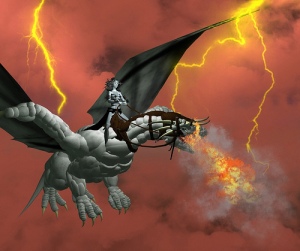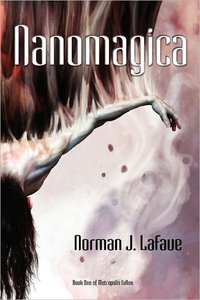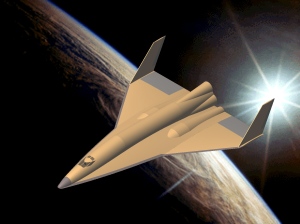First an apology…
I have been very busy the last few weeks editing the page proofs for my National Science Teachers Association (NSTA Press) book entitled “You Want Me to Teach What?” Te book is a how-to presentation of new and old methods for teaching physical science and mathematics. The book should be out in February. If you are a science or math teacher, or an interested student, I hope you will check it out.
I have been working on the sequel to my techno thriller, Nanomagica, and that caused me to begin thinking about all the implications of cybernetics to education and how people learn. Some thoughts…
1. If students have implants that give a student instantaneous access to the universe of information instantly, there should be no need to memorize. This means that students would be able to exercise their higher order skills earlier in the learning process. Lesson planning and assessment would have to change drastically, especially in the earlier grades.
2. What if the cybernetic programming could artificially generate synaptic connections in the brain? Like Neo in the movie The Matrix, it might be possible to learn skills at highly accelerated rates and without any prerequisite skills. Would schools be necessary? Would teachers become a kind of “brain programmer”?
3. With the addition of enhanced senses, all sorts of new levels of observation and dynamic analysis of these observations might be possible without the need for external equipment. People would be able to measure with their senses and analyze complex patterns dynamically.
4. Given synaptic programming, people would be able to change careers at a whim. How would this change the economy and the job market?
Your thoughts?
Norman
 In my latest writing project, I am exploring propaganda and its effect on society. Specifically, how and why it takes hold, what factors help it propagate, and why, in this age of instant information, it continues to thrive.
In my latest writing project, I am exploring propaganda and its effect on society. Specifically, how and why it takes hold, what factors help it propagate, and why, in this age of instant information, it continues to thrive.
It has amazed me that, with information available at your fingertips, untruths continue to affect our thoughts, our policy, and our lives. I would have thought that the internet would have made it harder for lies to take hold. Here are some observations I have made in my research…
1.) Best practices of journalism have been abandoned, specifically checking for secondary sources. Indeed, what constitutes a source has been changed. Blogs and pundit opinion are now quoted as if they are worthy sources of information. In addition, some statements are validated cyclically…One person makes an erroneous statement, which is quoted by others, which is quoted by still others in the media. Finally, the original source of the statement will use this trail of statements to validate his original contention, thus “proving” he was right. Another interesting strategy employed by propagandists is the use of leading phrases in a statement to turn a questionable statement into a true statement. Add phrases like “Some people say…” or “I have heard that…” to the beginning of a lie, and it becomes a truth.
2.) Ideology is a powerful drug. Make statements that speak to a person’s innate ideology, and all the truth in the world won’t convince them otherwise. I have seen people argue with certified experts in a field and downplay verified and validated studies and data to protect their cherished beliefs. Unfortunately, this is aggravated by the fact that there are a number of experts whose opinions are for sale. If the propagandist can get even a small number of experts on an issue to sell-out, they will use this as proof of their contention regardless of how these so-called experts are treated by their colleagues and their professional societies. This has been especially prevalent in the debate over man-made climate change, where the fossil fuel industries have sponsored “research” to bring doubt to the validated and verified studies. In addition, people with strong ideologies search for “facts” that validate their ideology and ignore those that don’t, thus creating “facts” from their ideology rather than the other way around. The term “common sense” has been bandied about in debates and discussions as a justification for failure to do actual research into the facts.
3.) Education is critically important to any effort to fight propaganda. I have observed in my own high school students a critical lack of knowledge pertaining to a.) what constitutes a real source, b.) the difference between fact and opinion, c.) a lack of understanding of vocabulary being used in specific debates, and d.) a lack of interest in taking the time to research and formulate stances based on data and studies. Terrorism in our modern world demonstrates in the starkest fashion what unethical educated people can cause the desperate and uneducated to do. Propagandists often spend significant time infiltrating and attempting to control education and educators for this reason (see the debate in Texas over the social studies curriculum and the attempt to rewrite history). They also have, in recent times, attempted and in many cases succeeded in efforts to undercut the opinions of educated, credentialed, and experienced experts. This is done by creating conspiracies that don’t exist and claiming the experts are part of the conspiracy.
4.) Desperation breeds malleability which makes people susceptible to propaganda. Poverty, war, loss of loved ones…all of these can make even the best person believe a lie that puts a target on a possible culprit for his suffering. People become frustrated when they can’t find a source for their ills and propagandists use this frustration as a means of control. Combine this with a lack of education, and you have a fertile breeding ground for lies to take hold.
It seems that the instant access to information and communications provided by modern mass communications has actually worked for the propagandists.
I am interested in hearing your thoughts on this issue. I am not trying to take a political side here but to look at the issue from a historical and scientific perspective.
 I read and enjoy both genres, but I choose to write science fiction. Still, it seems to me that there is much to be said for the stories which merge them. In my new novel, Nanomagica, attributes of fantasy are weaved into the techno thriller story in a unique way. I am interested in exploring other types of hybrid story lines in the future and have begun to take notes for a novel in which science fiction is weaved into a fantasy story.
I read and enjoy both genres, but I choose to write science fiction. Still, it seems to me that there is much to be said for the stories which merge them. In my new novel, Nanomagica, attributes of fantasy are weaved into the techno thriller story in a unique way. I am interested in exploring other types of hybrid story lines in the future and have begun to take notes for a novel in which science fiction is weaved into a fantasy story.
As I have explored this in my notes, it seems to me that there are many ways to do this hybridization that stretch both genres in unexpected ways. For science fiction, it introduces an interesting avenue for world-building and an interesting and mystical contrast with the usual certainty of scientific and technological themes. For fantasy, it provides a new path to stretch and go beyond the classical attributes of magic, mythical creatures, religion, feudalism, and swordplay. I can see many paths of combination and approaches to this and would like to explore all paths in future writings.
Dune is a good example of the weaving of some classical attributes (feudal society, mysticism, and political intrigue into a science fiction story. I am interested in your thoughts and other examples you may have.
Let’s talk!
Norman
 Alien worlds are a staple of science fiction, planets with a variety of strange beings, ecologies and topographies. Still, in most books these worlds are usually roughly spherical, orbit a star, and satisfy the laws of orbital mechanics. I am currently exploring ideas that go outside this paradigm, “worlds” that break these conventions.
Alien worlds are a staple of science fiction, planets with a variety of strange beings, ecologies and topographies. Still, in most books these worlds are usually roughly spherical, orbit a star, and satisfy the laws of orbital mechanics. I am currently exploring ideas that go outside this paradigm, “worlds” that break these conventions.
I always admired Larry Niven‘s imagination in this regard. Many of his books explore worlds so different from our own that they require rereading to gain perspective of his vision. From the engineered band around a star in Ringworld to the floating trees of Integral Trees, Niven has a knack of making the reader reconsider the whole concept of what a world is and what is possible. Peter Hamilton’s Eden in The Night’s Dawn Trilogy, a living world existing in mutualism with its inhabitants is another fascinating conception. Stephen Baxter‘s Manifold World novels also go beyond the paradigm.
In my current project, Suscitatio Astrum, I am endeavoring to create my own new conceptions of alien life and their environment. I am attempting to stretch the laws of physics and biology in a new way to create a “place” that is unique.
I would love to hear your ideas on this.
Norman
I have always believed that science fiction provides a unique perspective for examining the human condition. The speculative nature of science fiction allows authors to explore a variety of psycho-social reactions to strange and unfathomable stimuli.
This is a unique nitch that only fantasy comes close to matching. Many genres explore the human condition and reactions to known stimuli, and do that well. But with technology and science bringing new capabilities to the world, it is important that we explore how humanity will use and react to these new capabilities, good or bad.
Asimov was the master of examining the human condition in science fiction. The Foundation Trilogy captured mankind’s inability to maintain institutions over time in a way that mimicked actual historical record for various empires and dynasties. His robot novels asked fundamental questions about what it means to be human that we may be asking for real as computers gain on us in reasoning power.
In my current project, I am examining the social implications of forced human evolution and its effect on society.
Thoughts?
 In my Metropolis Fallen series (Nanomagica and the upcoming Evolegicon), I have created what I believe to be a man with no redeeming qualities…evil incarnate. This got me thinking about other evil characters in the genre. Who is the most evil character in sci fi?
In my Metropolis Fallen series (Nanomagica and the upcoming Evolegicon), I have created what I believe to be a man with no redeeming qualities…evil incarnate. This got me thinking about other evil characters in the genre. Who is the most evil character in sci fi?
I remember the scene in The Empire Strikes Back where Darth Vader is calmly giving orders to a new commander while he uses The Dark Force to strangle his predecessor. At the time, I thought this was an example of what real evil should be like…no anger…no consideration of the act…just sheer dismissal of the act of murder and the murdered.
Later, I had to give evil props to Vladimir Harkonen in Dune. Here was a man, a ruler, that had enslaved his entire populace, and was an insatiable pedophile.
But I have to give the award for pure evil to Peter Hamilton’s Quinn Dexter from The Night’s Dawn Trilogy. Quinn is an avid satanist, a man who relishes murder, rape, and torture; adults, children, men, women, elderly, or very young…all of them are sadistic playthings to Quinn. Acts of evil aren’t a means to an end to Quinn, but the end itself. But what really makes him so unsettling is that his evil is the source of his power. Evil isn’t some all encompassing mystical force like Darth Vader employs, but an inherent evil within his being that he uses to rain havoc on the universe.
It is my hope that my character measures up to Quinn while being unique.
Let’s hear about your choice for most evil.
 I am sitting here watching the Cincinnati-Tennessee game and it got me thinking about sports and the future. Literature is replete with sports and science fiction and fantasy are no exceptions; from the Quiddich of Harry Potter to Rollerball to Death Race 2000. There are many examples of writers considering this question from a variety of perspectives. I mention one perspective of this in my new novel, Nanomagica.
I am sitting here watching the Cincinnati-Tennessee game and it got me thinking about sports and the future. Literature is replete with sports and science fiction and fantasy are no exceptions; from the Quiddich of Harry Potter to Rollerball to Death Race 2000. There are many examples of writers considering this question from a variety of perspectives. I mention one perspective of this in my new novel, Nanomagica.
It is helpful to consider how sports has changed in the previous centuries. There can be no doubt that sports has undergone some profound evolutionary changes over time; athletes have gotten bigger, faster, and stronger; equipment has gotten better (just look at Tennis racquets); sports medicine has become a major factor; and the infrastructure has become more elaborate and expensive (check out the modern college locker room). We are also dealing with artificial enhancement through chemistry and the implications of drugs in athletic performance and human health.
The question becomes… Where are we going in the future? What role will genetic engineering and nanotechnology have in the future of sports? Consider the almost-perfect body attributes of Michael Phelps for swimming or Usain Bolt for running the 100m dash. These athletes received these gifts through the chance of human genetics. But what if we could engineer these attributes, not at random, but as part of a program to develop athletes from birth? Would parents pay to make their child a super athlete? How long would it be before we had an 8 foot-tall center in basketball or a man who could run under a 3-minute mile? What would this mean for athletics and how people perceive it? How would engineering athletes interfere with free choice? Where will this take the regulation of sports?
Take these considerations even further into the future. What if we were to engineer human athletes to fly or to breathe under water? Would this lead to new sports not possible today?
I want to hear what you think.
Norman
Here is an interview I did on the BackXStory Radio Show on BlogTalkRadio. We talked about all of the influences and themes in my novel, Nanomagica. Our discussions touched on the future of technology, science, philosophy, and policy. It was great fun to do. I want to thank Frank Fiore and Steven Bradley for having me on their show.
 I was talking with a reader of mine the other day who asked me what authors and novels inspired me. After some thought…
I was talking with a reader of mine the other day who asked me what authors and novels inspired me. After some thought…
- Frank Herbert – Herbert’s Dune is, in my opinion, one of the finest and most complex novels ever written. I have read it three times and I am still amazed at the richness of the worlds and characters he created. Technology, politics, psychology, mysticism…it has it all. The sequels are decent and worth a read, but that first book is a classic. Brian Herbert and Kevin Anderson’s Dune books are surprisingly good.
- Peter Hamilton – I have read everything Mr. Hamilton has produced but it was the Night’s Dawn Trilogy that hooked me. Interesting worlds, political intrigue, a touch of horror, sexual escapades, and likeable characters, make these books a must read. These books also contain the most evil character I have ever found in a novel.
- Isaac Asimov – From the robot novels to the pre-foundation novels to The Foundation Trilogy, Asimov is a master. His novels captured unique themes such as the decay of empires, and the psychology of sentient robots. He was a major influence for my thinking when I wrote my novel, Nanomagica.
- Dan Simmons – I loved Hyperion. But the sequels floored me. His concept of worlds linked by portals fascinated me, especially the idea of houses with rooms on different planets. These books rival Dune for richness of scenes and characters. I am reading Illium now and again, Simmons brings unique ideas to the reader.
- Arthur C. Clark – Childhood’s End still disturbs me.
- Micheal Crichton – I am not crazy about many f his later novels, but Andromeda Strain and Terminal Man were ahead of their time.
- H. G. Wells – What can I say? He opened the world of science fiction to me. War of the Worlds….classic!
- Jules Verne – The other earliest influence. 20,000 Leagues Under the Sea is a favorite of my childhood.
- Robert Heinlein – Stranger in a Strange Land was truly unique.
- Ray Bradbury – I like almost everything he wrote.
Let me hear about your favorites.
Space launch, the ability to get people and cargo from the Earth’s surface to orbit and beyond, is taken for granted by most science fiction stories and novels, including my novel, Nanomagica. It seems that every story has a hypersonic spaceplane to get people off-planet. These systems, in the stories, are reliable, routine, and cheap enough that they are prevalent.
So what is the reality of real space launch today?
Space launchers are expensive. It takes an enormous amount of fuel and oxidizer to get a significant amount of cargo mass to orbit. In addition, much of the structural weight is lost in staging and tank jettison. The space shuttle, the closest man has come to these fantasy spaceplanes, costs hundreds of millions of dollars per launch, and never reached its goal of routine launch processing and execution.
So what technologies are necessary to reach the goal of routine and inexpensive space launch?
1. Advanced propulsion and propellants – Rocket engines have high thrust at the cost of enormous fuel and oxidizer consumption. This propellant has enormous weight that must be carried by the launcher. An advanced propulsion system must get beyond this. What are the options?
- Air breathing rockets that don’t have to carry near as much oxidizer.
- Silane propellant that allows Nitrogen to be a secondary oxidizer (safe and noncryogenic).
- Pulse detonation engines that are more efficient than combustion processes.
- Maglev launch that uses a rail to accelerate a launch vehicle (powered by a ground source).
- Higher energy propellants and additives.
- Laser and particle energy feed to the launch vehicle.
- Magnetohydrodynamic aerothermodynamics and propulsion to increase launch efficiency.
2. Lighter and more reliable fuselage structures – Making the fuselage lighter means that less of the propellant is spent carrying structure.
- Advanced aerothermodynamic shapes.
- Advanced materials like composites, ceramics, and superalloys. Nanotech materials are also a possibility.
- Advanced thermal protection systems that are lighter, simpler, and require less maintenance. Titanium panels for instance.
- Manufacturing processes that allow for less fasteners and structural parts.
3. Smart systems that learn and allow for ongoing monitoring and maintenance of all launcher systems during launch prep and flight, with massive redundancy. This would include advanced sensors and actuators that can diagnose and fix problems dynamically. Nanotechnology would go along way in this task.
How close are we? Not too far from the goal. Right now, the big obstacle is money and will, not technology. Why should we care? Because advances in these technologies will drive all kinds of technologies for the future. This nation used to have a sizable technology advantage because we pushed the envelope. We need to do that again and regain that advantage.
Imagine a hypersonic space launcher with no staging…air breathing rocket engines with Silane propellant…structure built from advanced composites in one piece by massive part printing technology with integrated nanotech sensors and maintenance actuators…thermal protected by interlocking titanium plates…smart systems monitoring and fixing systems on the fly.
This could happen…if we want it to. And we should.
Note: We will discuss an alternative to these launchers in the future.



